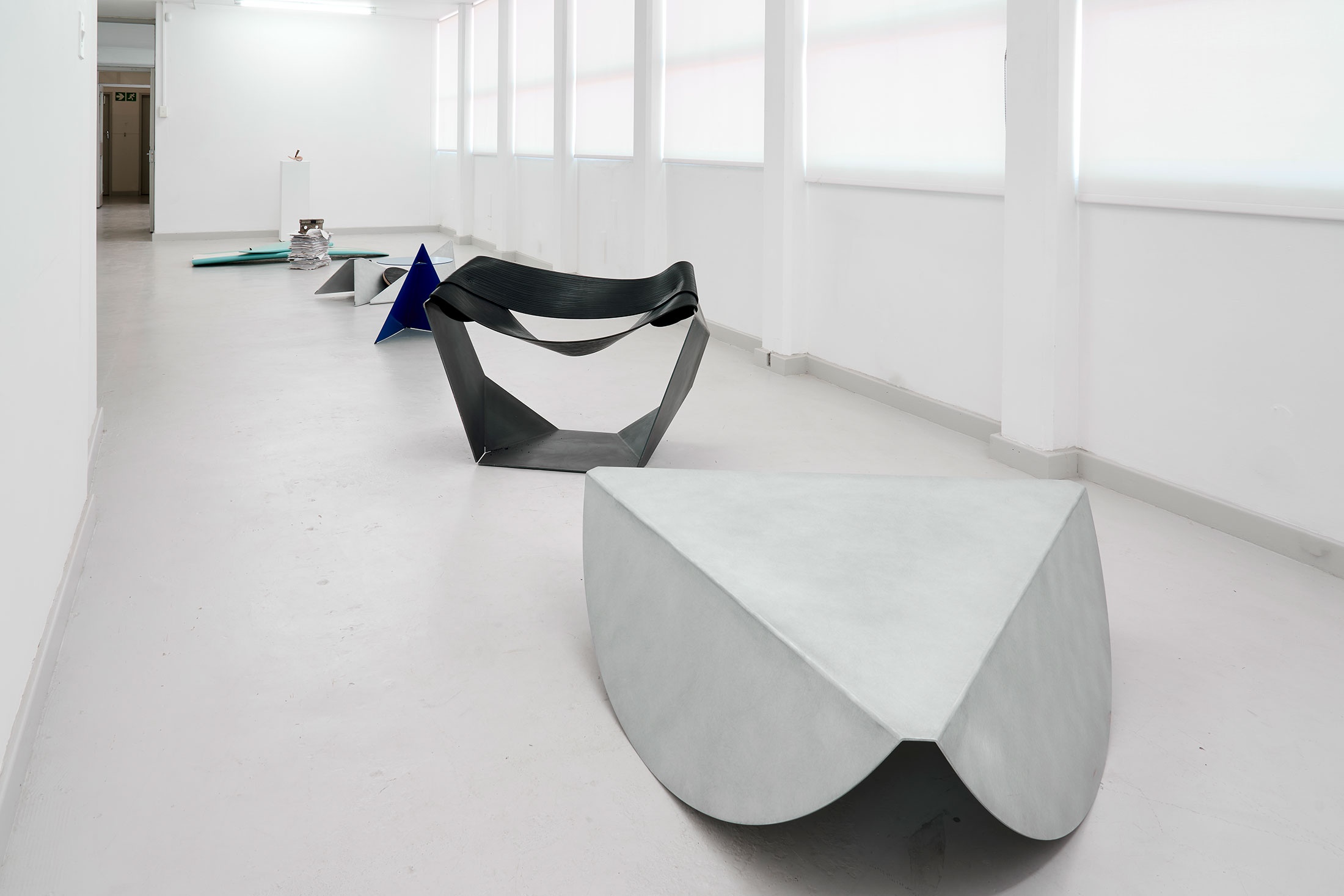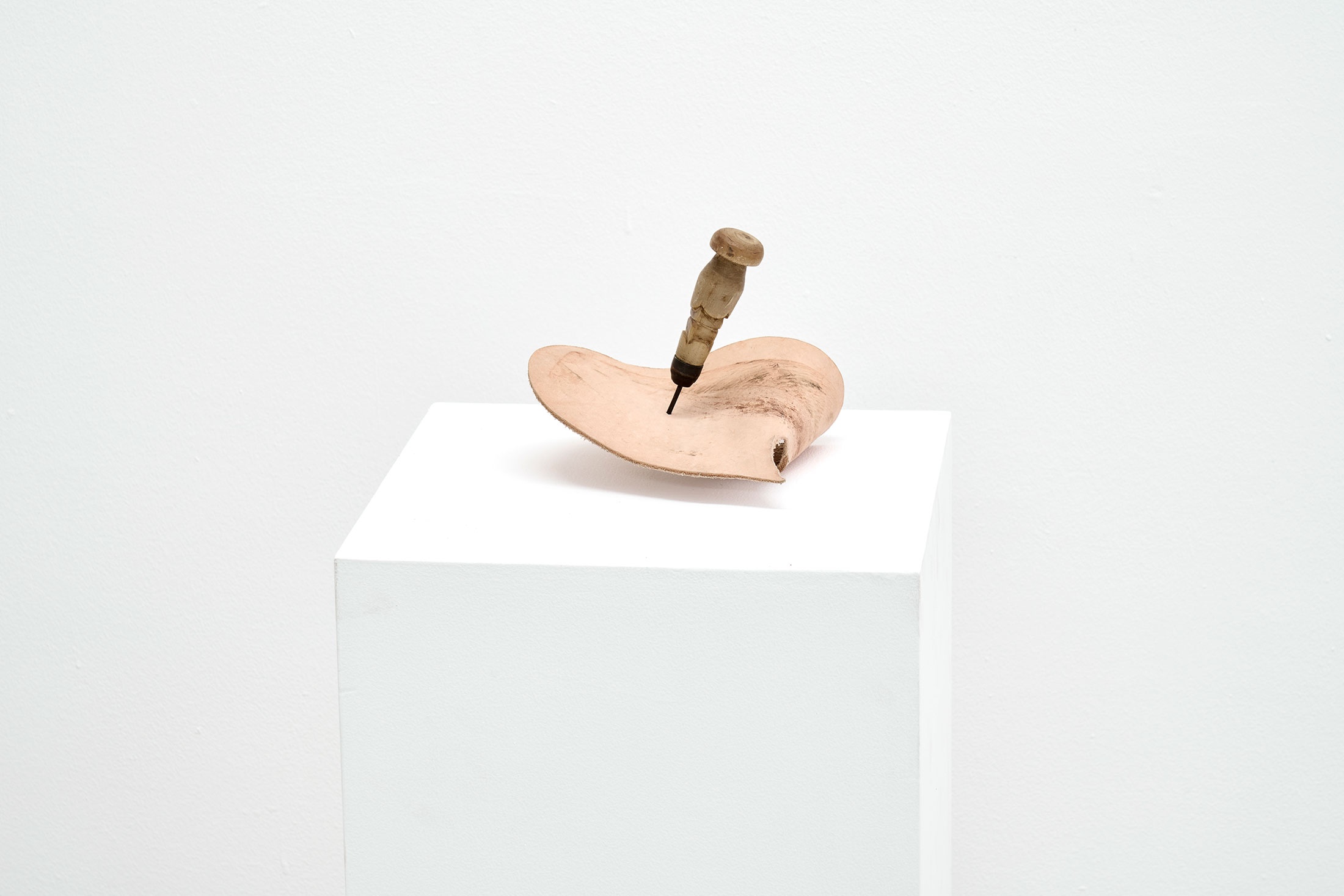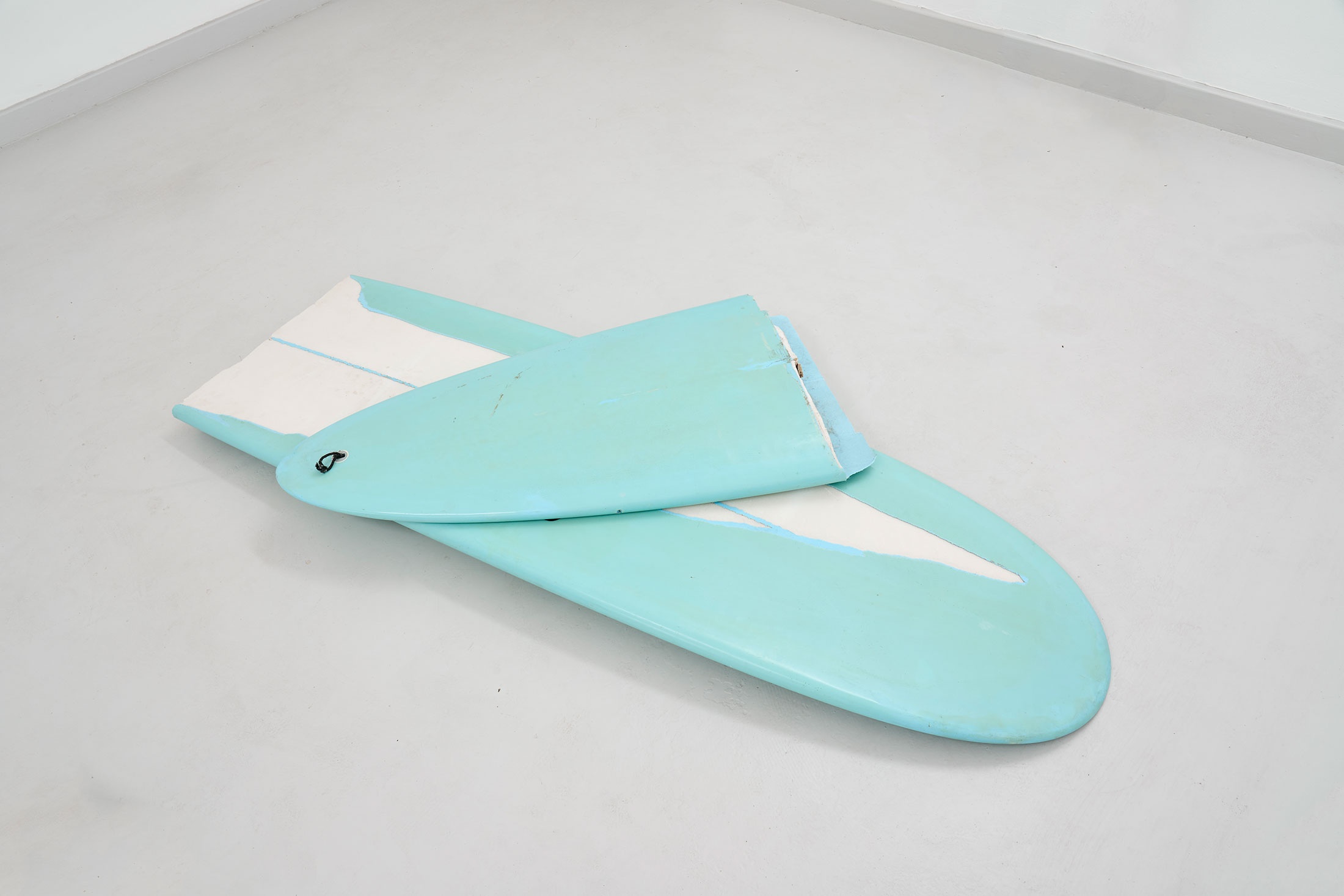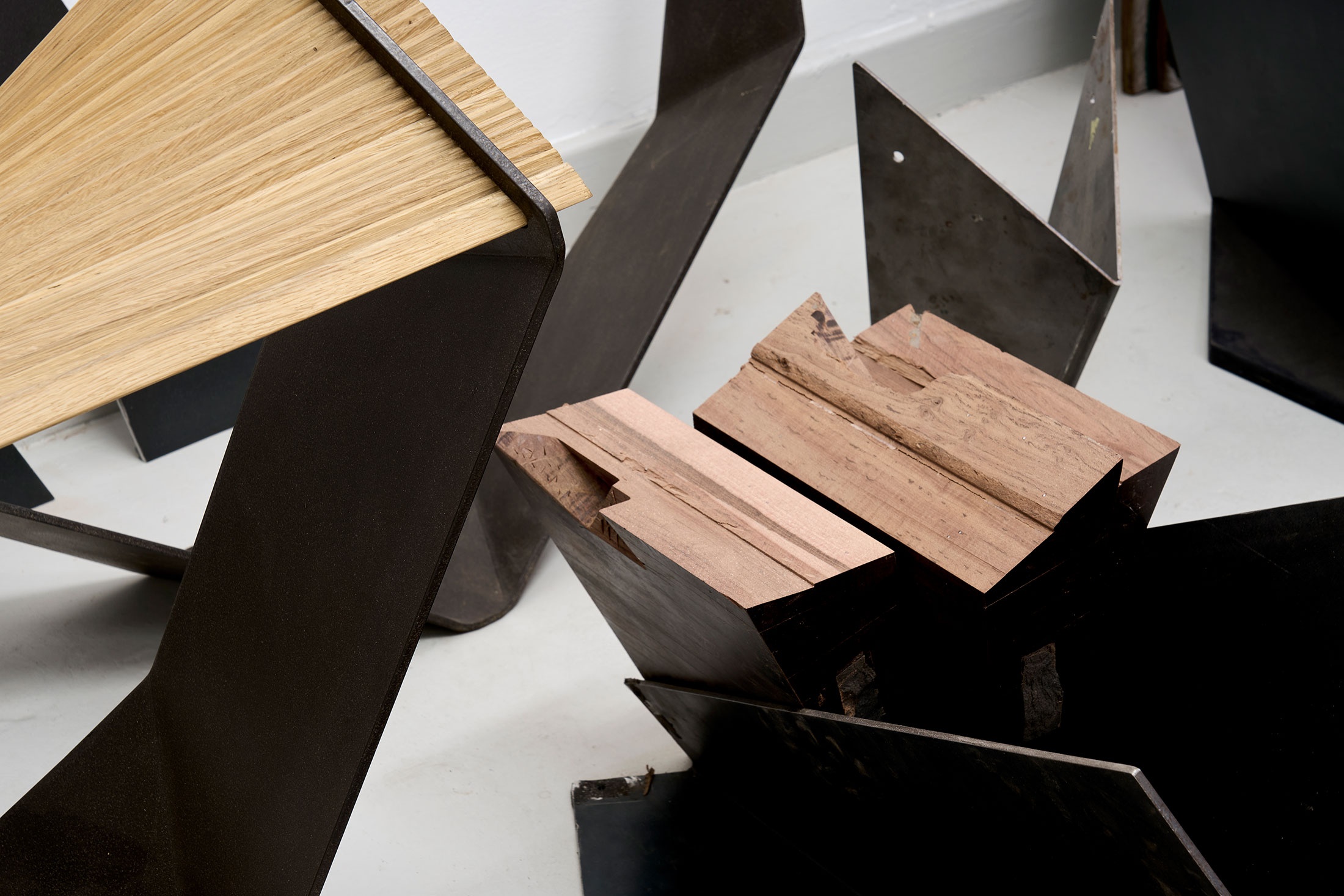First in line: an ‘els’ made by Xandre Kriel’s grandfather. The els is a handmade tool for leather working. To grasp the handle carved from goat horn is to hold hands with its maker, touching a patina moulded from years of stabbing the steel ‘spiker’ into a piece of hide. Where a needle could not easily penetrate, an els punctures the leather for thread to pass through. Parts cut to a pattern are then cobbled together into the pairs of shoes required by a goat farmer’s family and the hats that offer small salvation from the Karoo sun. Of the intensely Calvinist people who lived in the Sandveld region, an intractable landscape in the north-west Karoo, Kriel tells,
It was not frowned upon for the farmers in this region, that when you harvested the cedar trees from which to cut the planks to build your house, you kept aside enough wood for your coffin. The wood from cedar trees is a preservative, it repels insects. Often, you would make the coffin at the same time your house was constructed and keep it beneath your home your whole life long. In this way, you worked and lived with you death.
From this implement made for a purely utilitarian application, Kriel begins a line of philosophical enquiry to do with work and value through the things he makes: furniture-like objects that are faithful to tool-like forms yet inspire unusual rest. Where they are composed of components that are mechanical in sentiment, they inhabit a complicated status as ‘workable’ objects.
Those whose work is manual labour – farming, working at machines, and in construction – are often least able to afford to down tools at the end of a working day. Industrious, competent, thrifty people come home to build their own houses, make furniture, seam curtains, sew clothes, grow and prepare food. Kriel and I both grew up in homes where hobbies are most often helpful and talents are selflessly put to use to improve the conditions of living and to provide for the family. And so, where Kriel has placed a broken surfboard alongside the els, it could appear to be the tool's antithesis. Going surfing isn't being helpful. While you may stand facing the froth at 5am with an offshore wind at your back urging you forwards, this isn't a ‘morning productivity club’ you’ve joined to learn how to become a better contributor to the relentless demands of the market economy. Says Kriel:
The broken surfboard is an expression of my ‘mulletness’, of being a little bit crazy, or maybe even mental in quite a big way. When you get into the ocean, you know you’re going to get a little bit broken. You’re like a ‘pap chip in die water’ – what you rely on in this huge sea is this tiny toothpick. These same emotions get distilled in the studio. When I send a pattern to the machines, I don’t know if it's going to work. This thing comes back: a moment of truth! Snapping a board, or one of these objects breaking when I get it back from the machines, is like shitting your pants. A stream of thoughts comes through your mind. Am I good enough? Do I have any value? Will I survive this?
Both els and board were shaped by experienced hands hoping they might sustain a lifetime of rough use. I ask him why he first brought the broken board into the studio. “I brought it in for sentimental purposes, but I had hoped I could perhaps fashion a shorter board from its pieces.” To quote Picasso: Forcing yourself to use restricted means is the sort of restraint that liberates invention. Growing up working class builds an economy of means – it becomes natural to conserve materials, to know how to improve operations using what is already at hand, to eschew waste and needless consumption. The surfboard is also a tool for making your own freedom. From its application, it becomes possible, to paraphrase William Finnegan in his memoir of the surfing life Barbarian Days (2015):
To feel the weight of unmapped worlds, of unborn language… Chasing waves in a dedicated way was both profoundly egocentric and selfless, dynamic and ascetic, radical in its rejection of the values of duty and conventional achievement.
Alongside the broken surfboard is a pile of assorted parts that can be slotted and stacked together to assemble The Piek. A smaller version of Kriel’s Chapel Chair, it too requires a straight-backed sitting that inspires reflection. Where the Chapel’s aesthetic is ‘church’, and its use ascetic, Piek is imagined as a foyer chair, a piece to aid the transition between inside and outside worlds. When the mind is between states, The Piek is a place to take a moment to sort yourself out. “It has a mechanical sensibility, it can be sat on, and its use is tool-like,” says Kriel – for untying shoes, hanging a coat upon Piek’s steep back, and in the performance of those actions’ opposites. Kriel hand-brushes its aluminium surface seven times, a way of welcoming or getting ahead of the inevitable scratching that will mark the Piek's surface through use.
Next up, what Kriel playfully refers to as his “filing system”, a weight balanced atop a pile of his sketches. The Samosa table unpacks the triangle pastry while acknowledging the labour performed at ‘the home front’ – the domestic work of place-making, feeding, and care. Made from aluminium, a light and durable material chosen with awareness towards the kinds of bodies that are more often tasked with housework, it can be picked up single-handedly and requires little effort to move in spite of its size. The material accommodates both inside and outside use.
The Techno Loafer is a single sheet of bent steel with two eyes through which to thread a piece of recycled conveyor belt. Kriel has carved into the rubber for greater stability. The Loafer asks that whoever uses it gives back by participating in its maintenance and preservation, waxing the Loafer twice a year. This has the benefit of developing the Loafer’s texture, where the steel accrues evidence of time's passing on its surface. Placed in a sunny spot indoors, the Loafer will gently brown like toast. In the shade, it retains its cobalt hue. Alongside the Loafer, a piece made from two components – a self-locking mechanism of two parts (disc and stand) – is modelled off the workings of a circular bit.
“This is a useless object,” Kriel announces as we reach the end of the line.
It’s an absolutely useless piece, and in this way, it creates a buffer for you to rest at for a moment – to just be a person without any use value of productivity other than that of being you.
We stand together at this object for some time. We try resting our chins on it, then replace our chins with our elbows. We wonder at the gouges in its surface, claw marks left after objects of utter utility were carved upon it. Shaped like a screen, the useless object divides nothing from nowhere. We pause but don’t quite settle, leaning ungainly upon two wooden panels that don’t quite enclose us. The impulse is to put it to work while its inability to perform a single valuable action provides a place to wonder about how we let ourselves be used and how we can be of use. The object’s (useless) function is to keep that impulse in check. One might do well to be uncomfortable with being an apostle to productivity.



